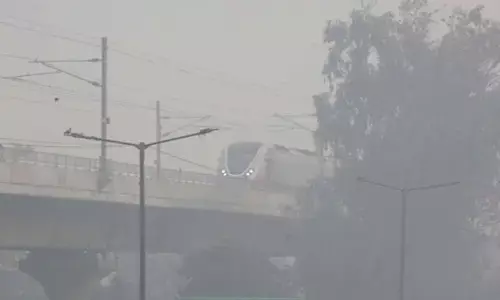Implications of totally sealing Indo-Pak border

Union Home Minister Rajnath Singh has recently declared that the entire India-Pakistan border is to be completely sealed by December 2018.
Union Home Minister Rajnath Singh has recently declared that the entire India-Pakistan border is to be completely sealed by December 2018. The announcement may be viewed in the context of India-Pakistan relations reaching a particular low and uncertain threshold post the Uri incident and cross-Line of Control (LoC) operations by India on 28-29 September 2016…
Government sources have indicated that a border security grid with a provision for real-time monitoring of the entire length of the border and capability for intervention as necessary is to be put in place. This will obviously involve networked coordination among the states’ home departments and their police authorities, their Central counterparts, MHA and the agencies responsible for technical and electronic surveillance.
Furthermore, the works authorities at the central and state levels will have to be involved in the logistics of the forces assigned to protect the border, border fencing, sensors being installed, and providing access road network to the border outposts. It is, however, not clear whether a physical infrastructure in the form of a wall or obstacles on the pattern of the Israeli West Bank defences (in Israeli-occupied Palestine territory) is to be eventually erected.
Even a complete sealing by barbed wire fences, adequately grouted with concrete supporting bases and flood lighting, of India`s western international border stretching 3,323 km from Gujarat to Jammu & Kashmir would undoubtedly be a stupendous task. The length to be covered in the four states – Gujarat (508 km), Rajasthan (1,037 km), Punjab (553 km) and Jammu & Kashmir (1,225 km) – including 740 km of Line of Control (LoC) northwards of the terminating point of the international boundary in Jammu is quite substantial.
Moreover, the terrain conditions and socio-economic milieu in the border regions of these states as well as the engineering efforts involved are likely to make the border sealing exercise quite an exacting one. While the need for effective border protection and guarding against infiltration by anti-national elements, smugglers, etc., is undeniable, the manner in which the sealing would take place will be of the essence…
So far as the geographical conditions are concerned, the border terrain varies from flat grasslands of the Punjab plains to extreme climatic sandy areas and marshy salt patches in Rajasthan and Gujarat. In Jammu & Kashmir, the LoC portion of the border to the north, beyond the 200 kms of international boundary in southern Jammu region, is hilly, forested and intersected by many mountainous rivers and numerous nallahs or drains.
While a major part of the LoC and the international boundary in Jammu region is fenced, a substantial part of the international boundary has also been fenced and floodlit – 461 km in Punjab and 1,048 km (fenced including extra fencing in some portions) with 1,023 km floodlit in Rajasthan, as per the last Annual Report of the MHA.
The remaining stretches of the border are yet to be covered. Moreover, there are segments of the border like the Shahgarh bulge in Jaisalmer district of Rajasthan, which have extreme climatic conditions for a major part of the year with average daytime temperatures soaring to more than 50 degrees Celsius, where metallic fencing does not last long. 32 km of this bulge could not be adequately fenced because of such terrain.
Furthermore, there are portions in the Jaisalmer-Barmer segment in Rajasthan where even the border (presently unfenced) markings get covered by shifting sand dunes… There are reports of India availing Israeli expertise towards executing its border sealing project. In this regard, it is relevant to mention that the political milieu and geographical conditions of Israel`s border areas and India`s are not exactly similar.
However, in difficult stretches of the LoC in Jammu & Kashmir and certain other segments of the border, India-Israel cooperation to adopt advanced techniques like installing laser-wall coverage of border portions where physical obstacles cannot be placed or maintained in all-weather conditions may be attempted…
For effective oversight and ground patrolling of the border, connecting roads to the border outposts are also necessary. Slow land acquisition has also been an impediment towards creating such a network of link roads to the border outposts. For effective border guarding, the inter-border outpost distance should also be reduced to 3.5 km, apart from upgrading a number of such outposts, entailing substantial civil works by the CPWD.
Instead of erecting static structures or walls with mounted electronic complements, a more dynamic mode of border management and surveillance may be expedient and cost-effective, with concomitant mobile patrols by all-terrain vehicles, hovercraft, etc. A complementary arrangement which enables 24x7 satellite surveillance may also be worked out. (Excerpts from an article; Courtesy: http://www.idsa.in)
By Gautam Sen













